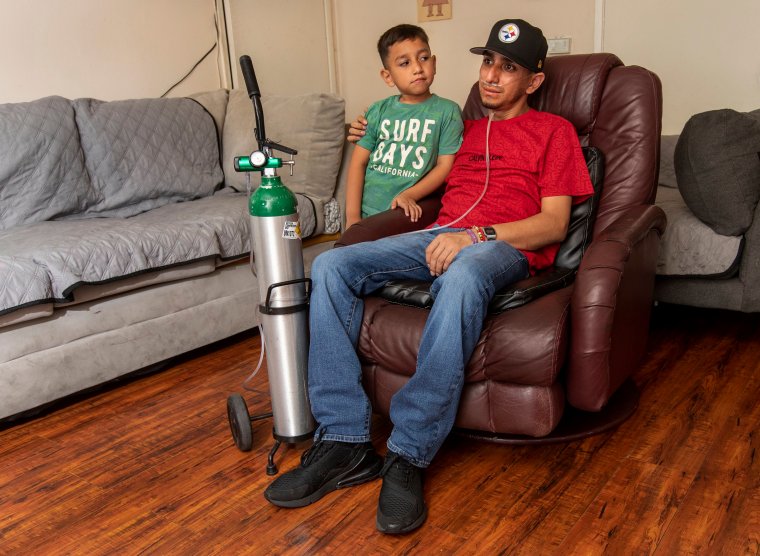Lawyers and doctors who helped the first British traders to be diagnosed with lung disease linked to materials used in kitchen renovations believe these cases could mark the “beginning of an epidemic”.
The first cases of silicosis have been reported in Britain in recent months among craftsmen who have worked with an artificial stone popular in modern kitchen worktops.
The material – rock quartz with a high silica content – has already been banned in Australia, where it was described as a modern-day asbestos after hundreds of suspected cases were identified.
The US state of California has also introduced emergency restrictions after the deaths of ten workers there.
Daniel Easton, a partner at Leigh Day, represents the first British patients to be diagnosed with silicosis after working with the stone. The long-term lung disease is caused by inhaling large amounts of crystalline silica dust, which is created during the cutting of the plates.
He told i: “We may be dealing with a silicosis epidemic that will become a major problem in the coming years. There are signs that we may be heading down a similar path to Australia.
“I think we might be starting to see the beginning of cases in England and we might have a lag compared to Australia and the big problems they’ve had might be just around the corner.”
Mr Easton added that after the first Australian case of silicosis associated with artificial stone was reported in 2015, the law firm was “wracked” over why Britain did not see an outbreak.
He said: ‘The impression we have had until perhaps the last 12 months was that perhaps there was a reason why England and Wales escaped. But I’m no longer so sure that’s the case.”
Up to ten cases of silicosis linked to artificial stone have now been identified in Britain, after i revealed in February that three cases had been reported last year to the Sword surveillance programme, which is used by doctors to record work-related respiratory illnesses.
The popularity of quartz kitchen surfaces has exploded in recent years and it is now the most popular worktop material in the UK.
Specialized water cutting techniques can suppress the spread of dust during production, but dry cutting can expose workers to harmful levels of silica dust.
Dr. Carl Reynolds, a respiratory consultant at Imperial College London, said patients with illnesses due to exposure to artificial stone dust were becoming increasingly common.
In an article written with Dr Sheiphali Gandhi, a pulmonologist at the University of California, they highlighted an increase in hospital admissions and had been caring for patients in London and California over the past twelve months.
He has called for a ban on artificial stone to protect workers in the industry, where accelerated silicosis among stone workers could occur after five years of heavy exposure, he said.
By comparison, industries such as mining required 10 to 20 years of dust exposure to contract silicosis.
“For artificial stone or artificial stone silicosis, the outbreak has occurred in younger people who have had heavy exposure as a result of working with this new material,” he said.
“We have a disease that is completely preventable. And it is a terrible disease. The prognosis is very poor. About half of the people who get this disease die from it or undergo a lung transplant.
“It just begs the question of whether we really need this new material in the environment when it has such well-documented disastrous health consequences.”
While it was almost certain there would be more cases, he said, it was difficult to know what the exact numbers might be.

In Australia, screening programs since 2018 found that 11 percent of 4,743 stonemasons and stoneworkers received a probable or confirmed diagnosis of silicosis due to workplace exposure to dust known as respirable crystalline silica (RCS).
In California, a study published last year found that 52 California stone workers had been diagnosed with silicosis, 51 of whom were Latino immigrants. Ten of them had died.
Leobardo Segura Meza, 27, is one of the workers diagnosed. After a decade of cutting, polishing and installing countertops in Los Angeles County, he is now told a lung transplant is his only hope for survival.
In Britain, kitchen companies have restricted the sale of natural stone worktops, although the Health and Safety Executive (HSE) said it is not considering any restrictions and is instead focusing on ensuring safe cutting practices.
Andy Phillips, director of the Worktop Fabricators Federation, a trade body for companies involved in the manufacture and installation of stone worktops in Britain, said an outright ban would not address the fact that silica dust is a risk when cutting other types of stone. .
He said: “The challenge is: if you’re going to ban artificial stone, what else are you banning at the same time? Cutting any type of stone is dangerous. You need to wet cut with quartz materials.
“And even when cutting wet, you still need to monitor the amount of dust and make sure it is actually effective in reducing it, and also use local extraction if necessary. Use PPE if necessary.”
The association hopes to study all data on cases of silicosis in workers linked to artificial stone to determine what types of controls took place.
“What we really want to understand as an organization is what we can do to prevent this,” he said.
